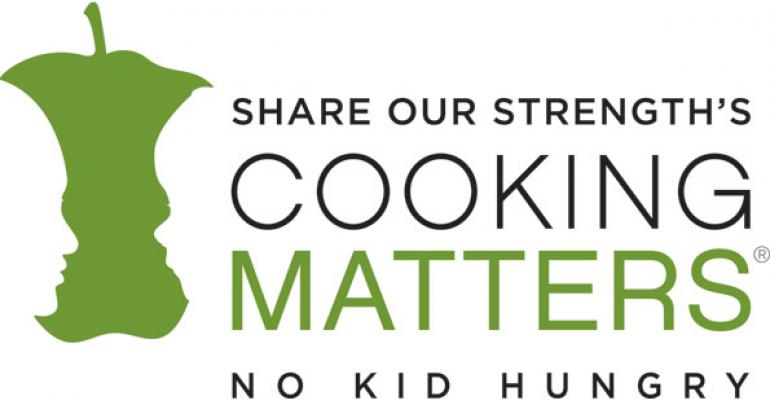 NEW YORK — Despite widespread concern that scratch cooking has gone the way of the Dodo Bird, a recent report surveying low-income families found families are cooking from scratch four times per week on average, and 78% of these families are eating dinner together at home at least five times per week.
NEW YORK — Despite widespread concern that scratch cooking has gone the way of the Dodo Bird, a recent report surveying low-income families found families are cooking from scratch four times per week on average, and 78% of these families are eating dinner together at home at least five times per week.
In fact, low-income families cook dinner from scratch more often than moderate-income families, according to the study “It’s Dinnertime: A Report on Low-Income Families’ Efforts to Plan, Shop for and Cook Healthy Meals,” released by Share Our Strength’s Cooking Matters, sponsored by the ConAgra Foods Foundation, and conducted by APCO Insight.
Most — 85% — of families said healthy meals were important, but may have a hard time making healthy eating part of their cooking routine, with 40% of those families not regularly preparing healthful meals. However, families who budgeted and planned meals ahead of time were more likely to serve healthful meals.
Cooking Matters, part of the nonprofit Share Our Strength’s No Kid Hungry campaign focused on eradicating childhood hunger, offers cooking courses for low-income families as well as grocery-store tours to help shoppers learn to evaluate nutritional value and price of food.
Janet McLaughlin, director of Cooking Matters, told SN the study did point to a few changes that the nonprofit could make, but it confirmed the organization is on the right track.
“The findings did confirm that people they do want to make healthy choices, which we know,” adding that all parents want the best thing for their kids.
“But it did also show that people are struggling to figure out how to make healthy eating really realistic for them.”
Families have a tough time interpreting nutrition information and determining which foods are healthy and unhealthy, according to McLaughlin.
“And so we saw that in the findings around fresh, frozen and canned fruits and vegetables that people recognize that fresh produce is extremely healthy but there [were] … a lot of families that did not realize that frozen and canned fruits and vegetables can also be a healthy choice and that they can also be affordable,” she said.
Cost proved to be a barrier for the purchase of fresh foods, with 26% of families skipping healthy foods due to price. For those who reported that they did not buy items because of price, 38% have skipped over fresh fruit because of price, 33% have skipped over fresh vegetables, 16% have skipped over lean meats, and 7% have skipped over seafood.
Due to these findings, Cooking Matters may emphasize affordable alternatives to fresh seafood and protein on future store tours, such as items like canned salmon or tuna fish.
One surprising aspect of the report, McLaughlin said, was the lack of agreement with barriers to healthy eating.
Three-quarters of families agreed that cooking healthful meals is realistic for them, and the majority of families didn’t agree that listed barriers — such as lack of information, taste, amount of worked needed — were barriers for them.
The study “pointed out that this really is a complex issue and that each family is navigating it on their own,” said McLaughlin.
Some consensus was found on the issues of price, time, and conflicting schedules, with 20% to 30% of families agreeing that these were obstacles to healthful cooking.
And, difficulties of time and scheduling did factor into results, with families with the parent in charge of the cooking working full-time cooking less often from scratch.
As for how retailers can better help low-income shoppers with meal planning, considering time and cost restraints, McLaughlin said there’s an opportunity for education.
“One of the things that we also saw in the survey was that the low-income families were really looking towards the grocery stores for information. So they were reading those circulars, they’re looking at the food labels, they’re looking at the signage in the stores, and that’s where they’re getting a lot of their information from.”
Retailers can use labels, circulars and signs to promote affordable recipes.
“And of course, I think that they could host Shopping Matters tours and help families practice comparing foods for nutrition and price and answering their questions, I think would also go a long way.”
To encourage more low-income shopper to buy more produce, retailers might draw attention to in-season or low-cost fresh produce with in-store signs.
Navigating produce unit pricing can be problematic for shoppers on a tight budget, including figuring out how much something is going to cost at the register and determining how much something weighs, according to McLaughlin.
The thirst for knowledge is certainly there for these shoppers, with two-thirds of families expressing interest in how to better budget for meals, and four out of five wanting to learn more about healthy cooking.





